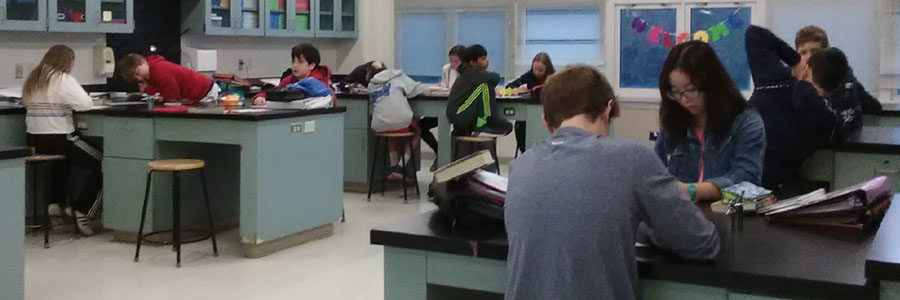Science Curriculum Emphasizes Thinking, Not Memorizing
Green pod 7th grade science students are creating a diagram of what animals do to combat cold. It’s part of thinking about science topics rather than just memorizing facts.
This year, seventh graders, and next year eighth graders, are experiencing what sixth graders did last year: a new science curriculum that focuses less on memorization and more on thinking.
Mrs. Elizabeth Smith, the science teacher for the sixth grade red pod, said, “It’s more about your thinking processes than information.” Mrs. Smith also said that the science curriculum used to be 75 percent facts, 20 percent skills, and 5 percent cross cutting concepts, but now it is a third of each.
The last time it changed was 2010-2012, following the same pattern of change in the grades. The new curriculum was actually decided in 2015, but the schools had until 2019 to have all three grades learning the new curriculum.
“It’s not a huge transition, really,” said Dr. Dan Cortright, a science teacher in the eighth grade purple pod. Some of the old science curriculum is also in the new one, including genetics and physics, so the science teachers didn’t have to find out how to teach completely new concepts. “It can be a little bit stressful to change,” Dr. Cortright added.
New topics are chosen by the preK to grade 12 science curriculum committee, which consists of some administrators, parents, and teachers, including Dr. Rosen and Mr. Kurtz, the sixth grade purple pod science teacher. These new topics come from a new set of science standards that the State of Connecticut chose a couple of years ago.
The standards were adopted by close to 30 states, including California and New York, and are called the Next Generation Science Standards. The topics are grouped in bundles, in a way that the committee decided made sense to students. Usually, there are between four and six bundles for each grade at the middle schools.
“I think you feel much more invested in what you do,” said Mrs. Smith. “I love it.”



